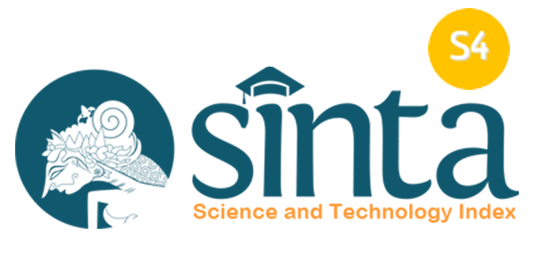How to Calculate Paired Sample t-Test using SPSS Software: From Step-by-Step Processing for Users to the Practical Examples in the Analysis of the Effect of Application Anti-Fire Bamboo Teaching Materials on Student Learning Outcomes
Abstract
Keywords
Full Text:
PDFReferences
Hadisaputra, S., Gunawan, G., and Yustiqvar, M. (2019). Effects of green chemistry based interactive multimedia on the students’ learning outcomes and scientific literacy. Control Systems, 11(07), 11.
Hake, R. R. (1998). Interactive-engagement versus traditional methods: A six-thousand-student survey of mechanics test data for introductory physics courses. American Journal of Physics, 66(1), 64–74.
Hanif, M. (2020). The development and effectiveness of motion graphic animation videos to improve primary school students’ sciences learning outcomes. International Journal of Instruction, 13(4), 247–266.
Khoirudin, R., Ashadi, A., and Masykuri, M. (2021). Smart Apps Creator 3 to improve student learning outcomes during the pandemic of COVID-19. JPBI (Jurnal Pendidikan Biologi Indonesia), 7(1), 25–34.
Kirindi, T., Ayçi̇Çek Kotaman, Y., and Çeli̇K, H. (2020). The effect of the computer-based analogy used in science teaching on learning outcomes. Turkish Journal of Science Education, 17(1), 73–93.
Lin, J.-L., Cheng, M.-F., Lin, S.-Y., Chang, J.-Y., Chang, Y.-C., Li, H.-W., and Lin, D.-M. (2017). The effects of combining inquiry-based teaching with science magic on the learning outcomes of a friction unit. Journal of Baltic Science Education, 16(2), 218–227.
Okagbue, H. I., Oguntunde, P. E., Obasi, E. C. M., and Akhmetshin, E. M. (2021). Trends and usage pattern of SPSS and minitab software in scientific research. Journal of Physics: Conference Series, 1734(1), 012017.
Ong, M. H. A., and Puteh, F. (2017). Quantitative Data Analysis: Choosing Between SPSS, PLS and AMOS in Social Science Research. 3(1), 12.
Purwanto, A., Asbari, M., Santoso, T. I., Sunarsi, D., and Ilham, D. (2021). Education Research Quantitative Analysis for Little Respondents: Comparing of Lisrel, Tetrad, GSCA, Amos, SmartPLS, WarpPLS, and SPSS. 4(2), 16.
Ren, D., Li, J., Xu, J., Wu, Z., Bao, Y., Li, N., and Chen, Y. (2018). Efficient antifungal and flame-retardant properties of ZnO-TiO2-layered double-nanostructures coated on bamboo substrate. Coatings, 8(10), 341.
Sahronih, S., Purwanto, A., and Sumantri, M. S. (2019). The effect of interactive learning media on students’ science learning outcomes. Proceedings of the 2019 7th International Conference on Information and Education Technology - ICIET 2019, 20–24.
Savitri, M., and Mudzakir, A. (2017). Reconstructing science teaching material containing nature of science on the topic of material particles and characteristics. EDUSAINS, 9(2).
Shapiro, S. S., and Wilk, M. B. (1965). An analysis of variance test for normality (complete samples). Biometrika, 52(3/4), 591.
Sriyanti, I., Almafie, M. R., Marlina, L., and Jauhari, J. (2021). The effect of using flipbook-based e-modules on student learning outcomes. Kasuari: Physics Education Journal (KPEJ), 3(2), 69–75.
Yu, Z., Gao, M., and Wang, L. (2021). The effect of educational games on learning outcomes, student motivation, engagement and satisfaction. Journal of Educational Computing Research, 59(3), 522–546.
DOI: https://doi.org/10.17509/ijotis.v2i1.45895
Refbacks
- There are currently no refbacks.
Copyright (c) 2022 Universitas Pendidikan Indonesia

This work is licensed under a Creative Commons Attribution-ShareAlike 4.0 International License.
Indonesian Journal of Teaching in Science (IJoTIS) is published by Universitas Pendidikan Indonesia (UPI)
 Indonesian Journal of Teaching in Science
Indonesian Journal of Teaching in Science



